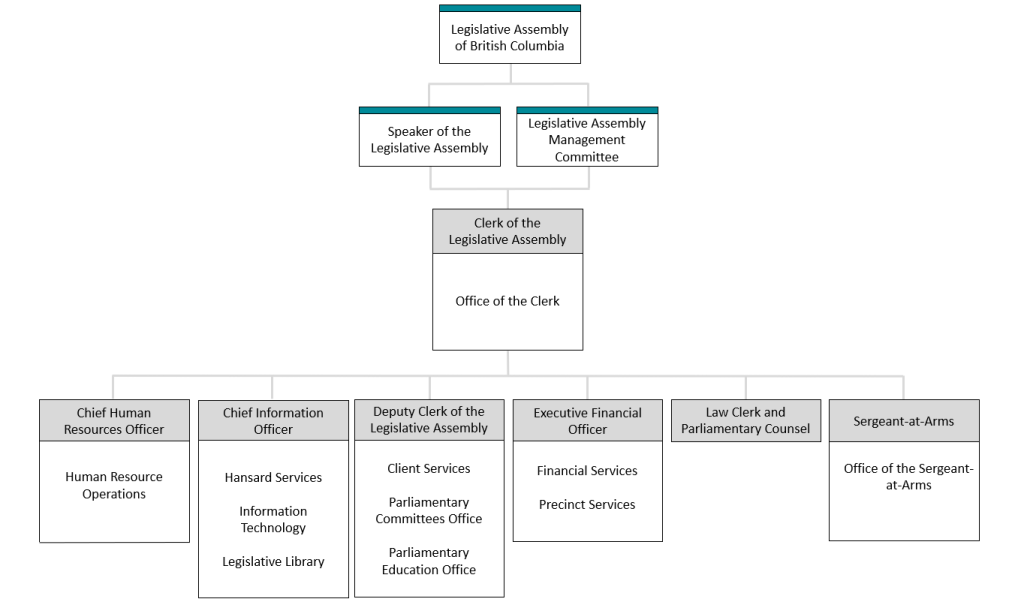The Legislative Assembly Management Committee is the statutory, all-party governance board that oversees the operations of the Legislative Assembly, a responsibility that is shared with the Speaker of the Legislative Assembly. The Legislative Assembly Governance Framework provides an authoritative overview of the framework, processes, and practices that support organizational governance at the Legislative Assembly.
Legislative Assembly Administration
The Legislative Assembly Administration operates at the direction of the Clerk of the Legislative Assembly and consists of more than 400 non-partisan employees, who are responsible for providing the services and infrastructure necessary for the Members of the Legislative Assembly to do their work. This includes providing a range of services and supports to caucuses and constituency offices located across British Columbia.
Organizational Structure

The Clerk of the Legislative Assembly is supported by the Clerk's Leadership Group (the executive team within the Legislative Assembly Administration), which consists of the Chief Human Resources Officer, the Chief Information Officer, the Deputy Clerk of the Legislative Assembly, the Executive Financial Officer, the Law Clerk and Parliamentary Counsel, and the Sergeant-at-Arms.
More information about their roles and responsibilities, and Legislative Assembly Administration departments and their mandates, is available on the Members’ Guide to Policy and Resources website.
Strategic Plan
The Legislative Assembly Administration’s Strategic Plan outlines its shared purpose, values, and priorities for fiscal years 2025-26 to 2028-29.
- 2025-26 to 2028-29 Strategic Plan
- 2022-23 to 2024-25 Strategic Plan (2024 refresh)
- 2022-23 to 2024-25 Strategic Plan (2023 refresh)
- 2022-23 to 2024-25 Strategic Plan
Year in Review
The Legislative Assembly Administration releases an annual report to share achievements from its Strategic Plan over the past year.
